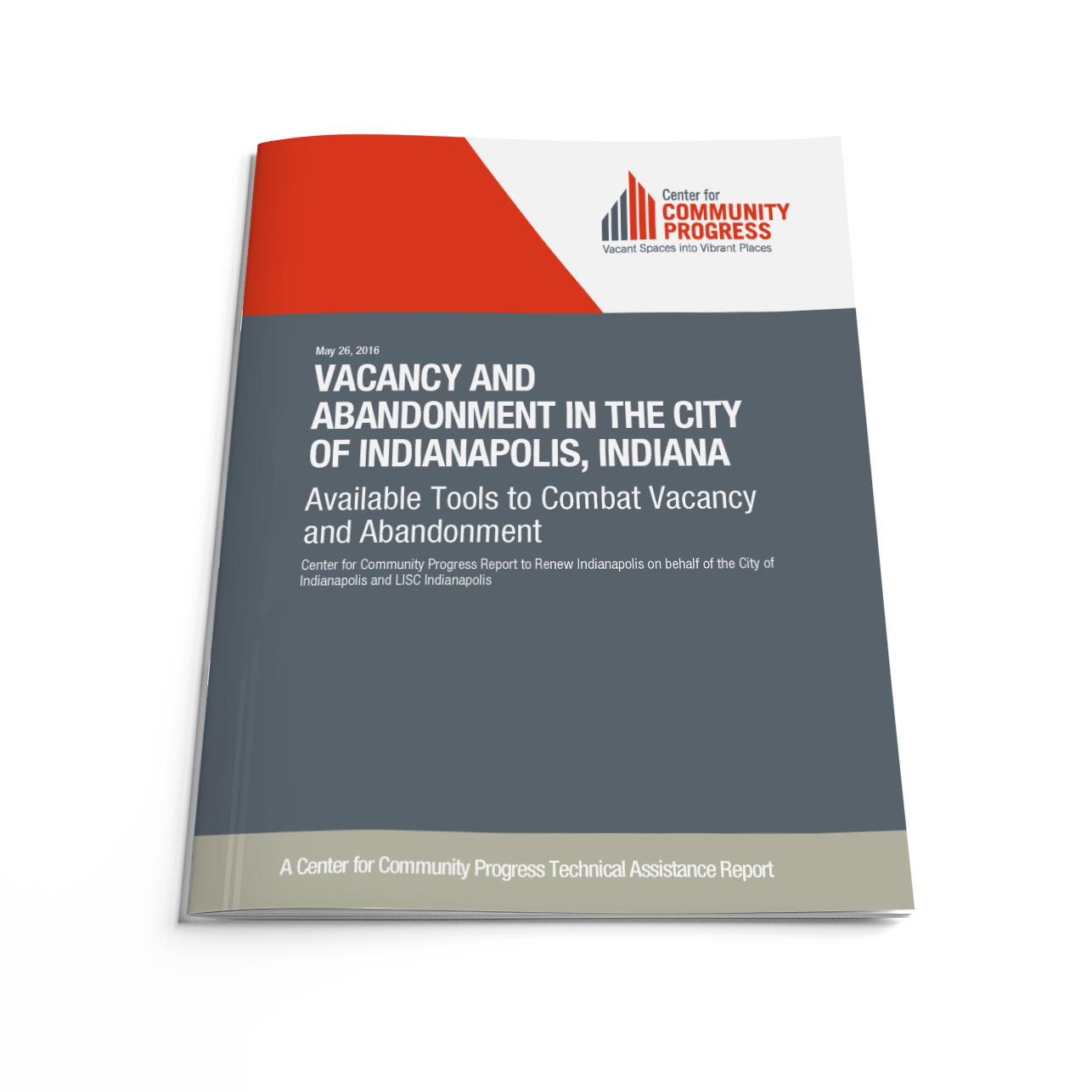
Vacancy and Abandonment in the City of Indianapolis, Indiana
A Community Progress Technical Assistance Report
Published: May 2016
Geography: Indiana
Author(s): Center for Community Progress
In 2016, Renew Indianiapolis — with the support of the City of Indianapolis and LISC Indianapolis — retained the Center for Community Progress to provide observations on the existing municipal systems and tools to address vacant and abandoned properties. This report provides local policymakers and community stakeholders with the foundation to undersatnd the current legel systems and policy tools available to address vacant and abandoned properties, and develop a framework for how to deploy those tools.
Two overarching observations driving many of the recommendations in this report. First, the City has a wide array of legal and policy tools in its existing toolbox that may be used to address vacant and abandoned properties. Second, the strong leadership, hope and expertise of local leaders reveals a level of sophistication which can support the City in deploying these tools in an effective, efficient, and equitable manner.
This report focuses on the necessity of the following four systems operating together as part of a coordinated and strategic approach to address Indianapolis’ vacant and abandoned properties: data collection, code enforcement, delinquent property tax enforcement, and land banking. Robust data collection is critical to ensuring a clear definition of the problem and for tracking the effectiveness of the implementation of code enforcement, property tax enforcement, and land banking strategies. Housing and building code enforcement, delinquent property tax enforcement, and land banking programs working in concert with one another can be utilized to acquire, maintain and transfer vacant and abandoned properties to responsible owners, and to prevent vacancy and abandonment over the long term.
Get the latest tools, resources, and educational opportunities to help you end systemic vacancy, delivered to your inbox.
